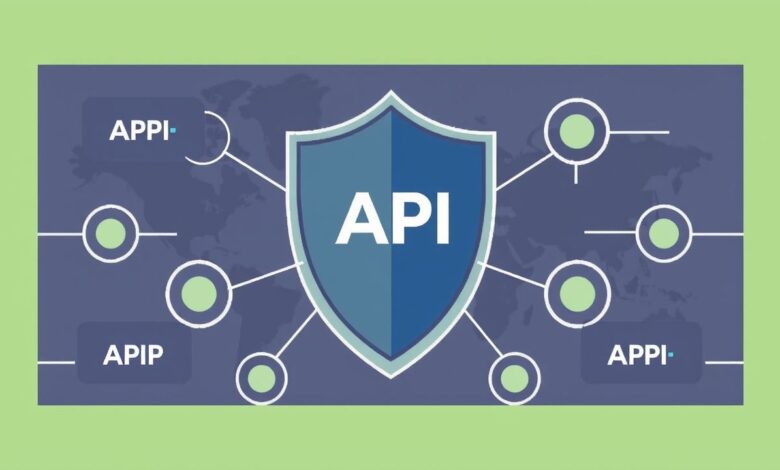Getting Started with API Security Fundamentals: A Beginner’s Guide

In today’s interconnected digital world, Application Programming Interfaces (APIs) are the unsung heroes. They act as messengers, allowing different software applications to communicate and share data seamlessly. From logging into your favorite app using Google to fetching weather updates on your phone, APIs power much of the convenience we take for granted. But with this power comes significant responsibility, especially regarding security. This guide will walk you through the essential API Security Fundamentals every beginner needs to know.
Understanding API Security Fundamentals is crucial because APIs often handle sensitive data and provide access to core functionalities. If not properly secured, they become prime targets for attackers seeking to steal data, disrupt services, or gain unauthorized access. Ignoring API security can lead to devastating data breaches, financial losses, and reputational damage.
Why Are APIs Vulnerable?
APIs, by their nature, expose application logic and data infrastructure. This direct exposure makes them attractive targets. Common reasons for vulnerabilities include:
- Complexity in modern application architectures.
- Lack of visibility into all deployed APIs (Shadow APIs).
- Insufficient security testing specific to API logic.
- Developers not always prioritizing security during rapid development cycles.
- Misconfigured security controls.
[Hint: Insert image/video illustrating how APIs connect different applications]
Understanding Core Threats: The OWASP API Security Top 10
The Open Web Application Security Project (OWASP) maintains a list of the most critical API security risks. Familiarizing yourself with these is a vital first step. While the list evolves, some recurring critical threats include:
- Broken Object Level Authorization (BOLA): APIs exposing objects without proper checks to ensure the user is authorized to access *that specific* object. Example: Accessing `/user/123/orders` should be allowed, but accessing `/user/456/orders` should be denied if you are user 123.
- Broken Authentication: Incorrectly implemented authentication mechanisms allowing attackers to impersonate legitimate users.
- Excessive Data Exposure: APIs returning more data than the client application actually needs, potentially exposing sensitive information.
- Lack of Resources & Rate Limiting: APIs not having limits on the number or size of requests, making them vulnerable to Denial-of-Service (DoS) attacks.
- Broken Function Level Authorization: Similar to BOLA, but focusing on functions/operations. Users might be able to access administrative functions they shouldn’t have rights to.
Staying updated with the OWASP API Security Top 10 project is highly recommended for anyone involved in API development or security.
The 3 Pillars of API Security Fundamentals
Effective API security strategies often revolve around three core principles:
- Authentication (Who are you?): This is about verifying the identity of the client (user or application) trying to access the API. Common methods include API keys, Basic Auth (less secure), and robust standards like OAuth 2.0 and OpenID Connect (OIDC). Strong authentication ensures only legitimate entities can make requests.
- Authorization (What can you do?): Once authenticated, authorization determines what actions the verified client is allowed to perform. This enforces the principle of least privilege – granting only the necessary permissions required for a specific task. For example, a user might be authenticated to access an e-commerce API but only authorized to view their own orders, not modify products (unless they are an admin).
- Auditing (What happened?): Comprehensive logging and monitoring are essential. This involves recording who accessed what, when, and what actions were performed. Auditing helps in detecting suspicious activities, troubleshooting issues, and investigating security incidents after they occur.
Essential Best Practices for Beginners
Beyond the three pillars, here are some actionable best practices to incorporate:
- Use Strong Authentication/Authorization: Implement industry standards like OAuth 2.0/OIDC. Avoid weak credentials or easily guessable API keys.
- Implement Rate Limiting: Protect against DoS attacks and brute-force attempts by limiting the number of requests a client can make in a given time frame.
- Validate Input Data: Never trust data coming from the client. Rigorously validate all input parameters for type, length, format, and range to prevent injection attacks (like SQL injection or Cross-Site Scripting).
- Use Encryption (HTTPS/TLS): Always encrypt data in transit using Transport Layer Security (TLS) to prevent eavesdropping. All API endpoints should enforce HTTPS.
- Minimize Data Exposure: Design APIs to return only the data necessary for the specific function being called. Avoid sending back entire database objects if only a few fields are needed.
- Keep Dependencies Updated: Regularly patch and update libraries and frameworks used by your API to protect against known vulnerabilities.
- Implement Security Headers: Use HTTP security headers (like Content-Security-Policy, Strict-Transport-Security) to add extra layers of protection.
[Hint: Insert diagram summarizing API security best practices]
Where to Learn More
Mastering API Security Fundamentals is an ongoing journey. Thankfully, numerous resources are available:
- OWASP: The definitive source for API security risks and mitigation techniques.
- Online Courses: Platforms like APIsec University or security vendors often offer free introductory courses.
- Developer Documentation: Security sections in API documentation for platforms you use.
- Blogs & Articles: Reputable tech blogs (like Medium, freeCodeCamp) often feature detailed articles on API security.
- Internal Resources: Check out our related article on Advanced API Security Techniques for next steps.
Conclusion
APIs are fundamental building blocks of modern software, but they also represent a significant attack surface. By understanding and implementing API Security Fundamentals, focusing on authentication, authorization, auditing, and adopting best practices like input validation and rate limiting, beginners can take substantial steps towards protecting their applications and data. Start simple, stay curious, and make security an integral part of your API development lifecycle from day one.




